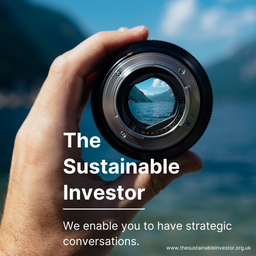How firms adapt to climate change
Do we really think enough about how firms will adapt to climate change. At the risk of sounding defeatist, we are already heading for c. 3 C of global warming. We need companies to prepare = adaption.
"Sustainable agriculture is not just about growing crops, it's about caring for the soil, the water, the air, and all the living things that depend on them." - Vandana Shiva
Sustainability professionals give a lot of attention to companies net zero plans and targets. And investors frequently consider how the sustainability transitions will bring new risks and opportunities. But we think less about how companies will adapt their existing operations as the impacts of climate change become more severe.
As part of this it is really useful to understand the extent to which companies are already taking actions, and what might drive them to act with greater urgency. Xia Li, an Assistant Professor of Strategy and Entrepreneurship at London Business School, has recently written on this, in an open access article "Physical climate change exposure and firm's adaption strategy". It's well worth a read.
I know that in some circles focusing on adaption is considered a bit defeatist. Some analysts prefer to prioritise mitigation strategies and plans. But for investors, the reality of where we may end up, based on current real world actions (+2.2 to +3.7 degrees C) means that we need to know how companies are preparing. And what it might mean for the resilience of business models.
Encouraging firms to adapt
While there is considerable analysis of companies net zero targets, we understand very little about how most firms are adapting to the threats and opportunities that climate change will bring. As Xia Li put it in her recent analysis ...
Companies are increasingly exposed to the physical impacts of climate change, yet little is known about how they adapt to these long-term, systemic, and uncertain changes.
And if we don't know what companies are doing (disclosure), we cannot identify where, as investors, we need to focus our efforts (analysis and engagement).
The recent publication (Oct 2024) was a more formal version of an earlier article she wrote for the LBS Think magazine.

First the bad news. According to the data only 23% (so less than 1 in 4) provides clear evidence (disclosure) of the measures they are taking to adapt to climate change. This may have increased since the study, but we often still lack the data we need to make informed investment decisions.
And some more bad news. Rather than make significant changes, most firms are likely to just adjust their existing routines and practices. Which in the context of the changes some firms face, is unlikely to be enough.
What factors help drive adaption?
The obvious one is a firm's exposure to the negative impacts. Or as the author puts it "the magnitude of forecasted climate exposure is pivotal". It makes sense that bigger possible/probable impacts bring greater focus. But of course, the first step in this process is accepting that the impacts are real, and that adaption measures are needed.
Beyond this, two other factors appear to be material. First up, a firm's ESG capabilities make a positive contribution. To be clear, this is not about having a high ESG score. It's more about already having processes in place to incorporate environmental and social factors into forecasting and strategy development. This is a lot less common that having ESG reporting and scoring.
Second, companies with a longer time horizon also respond better. This makes sense. If your company is already looking ahead a decade or more for it's strategy development, then layering in climate adaption is easier. This is consistent with my experience as an investor. If the business model was already based around long life assets, then worrying about the future is already baked in to the organisational culture.
What does this tell us? As the author says, the analysis opens up avenues for future research, including examining supply chains. But even without this, it gives investors some ideas on how to best encourage companies (the missing 3/4) to think more deeply about adaption. One route is to encourage them to start by adding E&S factors into their strategy development, and to be clearer in their communication around how they see the future panning out. And I mean real analysis, not some high level 'arm waving' and data mining that supports business as usual.
In all but the most dogmatic of companies, these should be un-controversial actions. As investors we need to start asking for answers. If the current forecasts come to fruition, this is a real risk to the resilience of many companies business models.
One last thought
One industry where this is likely to become a major issue is food, from agricultural production through food processing to supermarkets. There are a lot of different E&S strands to consider, including where and how the raw ingredients are grown, and waste reduction (if it's not wasted, we don't have to increase production by so much). It's a topic we starting writing about in a recent blog on climate change, supply chains and financial risk.

Please read: important legal stuff.




